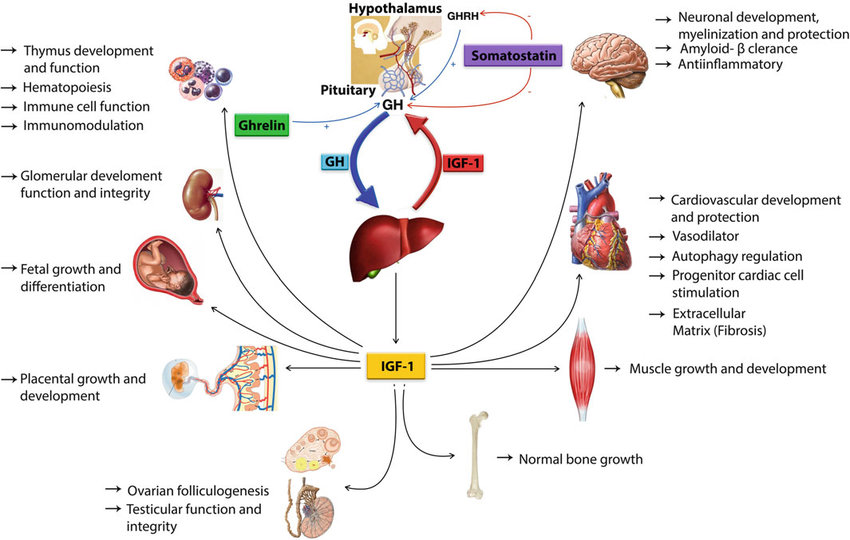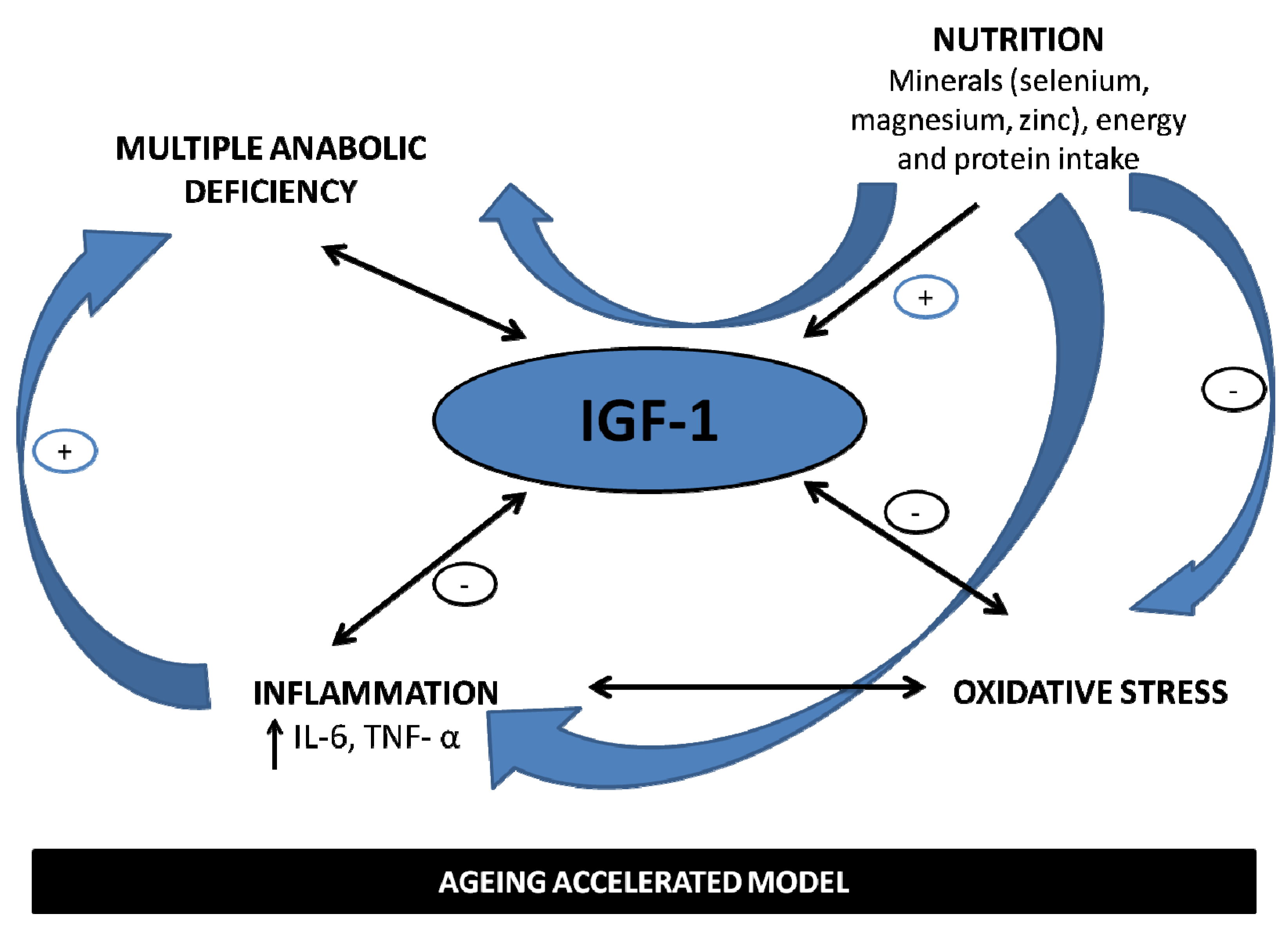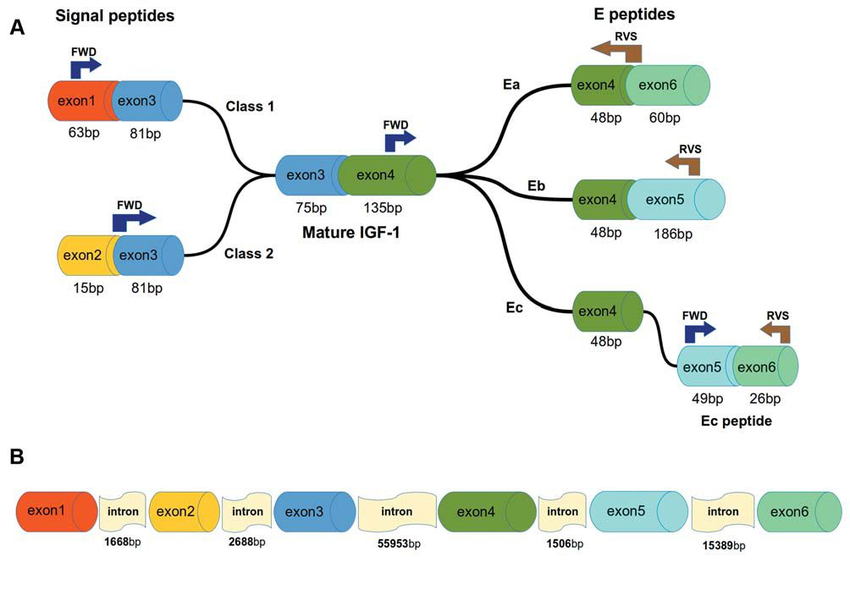HtnGymcel
6'2 / 90kg lean
- Joined
- Sep 4, 2025
- Posts
- 1,820
- Reputation
- 2,490
Introduction
GF-1 is mainly produced in the liver as a response to growth hormone. Together, they form the GH–IGF-1 axis, which drives muscle growth, recovery, and tissue repair. In recent years, some have looked toward peptides as a way to raise IGF-1. The focus should be on maximizing the body’s natural GH and IGF-1 output.
How it works:

How IGF-1 Is Regulated
IGF-1 production depends on how much GH your body releases and how well your liver converts that GH into IGF-1. Several factors affect this process:
Sleep: Most growth hormone is released at night during deep sleep.
Nutrition: Adequate calories, protein, and certain micronutrients help the liver make more IGF-1
Training: Resistance and high-intensity training stimulate short bursts of GH and IGF-1.
Hormones: Testosterone and thyroid hormones support healthy GH and IGF-1 levels.
Stress: High cortisol levels from chronic stress can block GH and reduce IGF-1
Study: https://pmc.ncbi.nlm.nih.gov/articles/PMC8534318/
Natural Ways to Improve IGF-1
Sleep: Getting enough sleep, around 8–9 hours per night, is one of the most powerful and overlooked ways to improve hormone function. Deep sleep drives GH pulses, which in turn stimulate IGF-1 release.
Nutrition: Diet has a direct effect on the GH–IGF-1 axis:
Protein: Aim for about 1.8–2.2 grams per kg of body weight daily.
Carbs: Needed to maintain insulin levels, which help the liver convert GH to IGF-1.
Micronutrients: Zinc, magnesium, vitamin D, and omega-3 fats improve endocrine balance.
Being in a long calorie deficit or under-eating protein can quickly lower IGF-1 levels.
Exercise: Exercise can also raise igf-1 because it creates a strong hormonal response. Over time, this helps maintain higher natural GH and IGF-1 levels and supports muscle growth.

Study: https://pmc.ncbi.nlm.nih.gov/articles/PMC7869853/
Peptides to improve IGF-1
Some peptides can stimulate your body to release more growth hormone naturally, rather than injecting GH directly. They fall into two main groups:
GHRH analogues (like CJC-1295 or Sermorelin): copy the natural hormone that tells the pituitary to release GH.
Ghrelin mimetics (like GHRP-2, GHRP-6, or Ipamorelin): act on ghrelin receptors to trigger GH release.
Using both types together can have a stronger effect on GH release, and therefore on IGF-1 levels.

GF-1 is mainly produced in the liver as a response to growth hormone. Together, they form the GH–IGF-1 axis, which drives muscle growth, recovery, and tissue repair. In recent years, some have looked toward peptides as a way to raise IGF-1. The focus should be on maximizing the body’s natural GH and IGF-1 output.
How it works:

How IGF-1 Is Regulated
IGF-1 production depends on how much GH your body releases and how well your liver converts that GH into IGF-1. Several factors affect this process:
Sleep: Most growth hormone is released at night during deep sleep.
Nutrition: Adequate calories, protein, and certain micronutrients help the liver make more IGF-1
Training: Resistance and high-intensity training stimulate short bursts of GH and IGF-1.
Hormones: Testosterone and thyroid hormones support healthy GH and IGF-1 levels.
Stress: High cortisol levels from chronic stress can block GH and reduce IGF-1
Study: https://pmc.ncbi.nlm.nih.gov/articles/PMC8534318/
Natural Ways to Improve IGF-1
Sleep: Getting enough sleep, around 8–9 hours per night, is one of the most powerful and overlooked ways to improve hormone function. Deep sleep drives GH pulses, which in turn stimulate IGF-1 release.
Nutrition: Diet has a direct effect on the GH–IGF-1 axis:
Protein: Aim for about 1.8–2.2 grams per kg of body weight daily.
Carbs: Needed to maintain insulin levels, which help the liver convert GH to IGF-1.
Micronutrients: Zinc, magnesium, vitamin D, and omega-3 fats improve endocrine balance.
Being in a long calorie deficit or under-eating protein can quickly lower IGF-1 levels.
Exercise: Exercise can also raise igf-1 because it creates a strong hormonal response. Over time, this helps maintain higher natural GH and IGF-1 levels and supports muscle growth.

Study: https://pmc.ncbi.nlm.nih.gov/articles/PMC7869853/
Peptides to improve IGF-1
Some peptides can stimulate your body to release more growth hormone naturally, rather than injecting GH directly. They fall into two main groups:
GHRH analogues (like CJC-1295 or Sermorelin): copy the natural hormone that tells the pituitary to release GH.
Ghrelin mimetics (like GHRP-2, GHRP-6, or Ipamorelin): act on ghrelin receptors to trigger GH release.
Using both types together can have a stronger effect on GH release, and therefore on IGF-1 levels.




